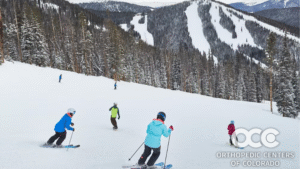Colorado cyclists are no strangers to pushing the limits—whether grinding up Lookout Mountain, tackling the steep switchbacks of Deer Creek Canyon, or clocking in serious miles on Cherry Creek Trail. But if you’re one of the many riders experiencing lingering hip pain after a ride, it might be time to pay closer attention to what your body is telling you. In many cases, the issue may be linked to poor hip alignment, which can affect your performance and lead to overuse injuries over time.
Hip discomfort while biking isn’t something to power through—it’s a sign of potential misalignment or overuse that could lead to longer-term issues if left untreated. And when it comes to hip pain cycling, early action is the key to staying in the saddle.
Understanding Hip Pain from Cycling
Cycling involves repetitive motion, forward flexion, and sustained pressure through the hips—especially during climbs or long-distance efforts. While it’s an excellent low-impact workout, cycling can also put stress on the hip flexors, glutes, and surrounding joints if your bike setup or form is even slightly off. Proper hip alignment plays a key role in minimizing strain and ensuring smooth, efficient movement with every pedal stroke.
Common issues include:
- Hip flexor strain: Tight, inflamed, or overstretched muscles at the front of your hip can create sharp or achy discomfort during or after a ride.
- Piriformis syndrome: Compression of the sciatic nerve from tight hip rotators.
- Bursitis or labral tears: Overuse injuries that cause deep joint pain or clicking sensations.
- Leg length discrepancies or pelvic tilt: Often unnoticed, these can cause one side of the body to work harder, leading to chronic discomfort or compensatory injuries.
The Link Between Bike Fit and Hip Health
If you’re struggling with hip flexor injury bike ride after bike ride, an improper bike fit might be the hidden culprit. A saddle that’s too high, a seat angle that tilts your pelvis forward, or pedals that don’t align properly with your biomechanics can all contribute to strain and imbalance. Over time, these minor misalignments add up, leading to inflammation and breakdown of soft tissue around the hip.
Before making big changes to your setup, we recommend getting assessed by both a professional bike fitter and a medical expert familiar with cycling biomechanics—especially if your symptoms have been ongoing.
When to See an Orthopedic Hip Alignment Specialist
Not every ache needs medical attention, but if you’re experiencing any of the following, it’s smart to consult an orthopedic hip specialist in Denver:
- Pain that persists more than a few days post-ride
- Sharp, pinching, or deep groin pain
- Loss of mobility or range of motion in the hip
- Pain that worsens on hills or while clipped in
- A popping or catching sensation in the hip joint
At Orthopedic Centers of Colorado, our specialists understand the unique demands cycling places on your body. We work with athletes and everyday riders alike to identify the root cause of hip pain from cycling and develop personalized treatment plans—whether that involves physical therapy, imaging, or minimally invasive procedures.
Keep Climbing, Without the Pain
Colorado’s terrain is too beautiful to miss out on because of nagging hip discomfort. If you’re grinding up Flagstaff or racing down Golden Gate Canyon and something doesn’t feel quite right, listen to your body. Prioritize alignment, proper recovery, and expert care.
Ready to ride pain-free again? Schedule a consultation with an orthopedic hip alignment specialist in Denver today and take the first step toward better performance—and better hip health.
How can I improve my bike fit to prevent hip pain?
To improve your bike fit, you should get evaluated by a professional bike fitter and consult a medical expert experienced in cycling biomechanics. Proper adjustments to saddle height, seat angle, and pedal alignment can significantly reduce strain and prevent misalignments that cause hip discomfort.
What are common causes of hip discomfort while cycling?
Common causes include hip flexor strains, piriformis syndrome, bursitis or labral tears, and discrepancies in leg length or pelvic tilt. These issues arise from overuse, tight muscles, nerve compression, or biomechanical imbalances, and can result in sharp pain, deep joint ache, or clicking sensations during or after rides.
Why do I experience hip pain after cycling, and how is it related to my bike setup?
Hip pain after cycling can often be linked to poor bike fit, such as a saddle that’s too high, an incorrect seat angle, or pedals not aligned with your biomechanics. These misalignments cause strain and imbalance, which over time can lead to inflammation and soft tissue breakdown around the hip.







